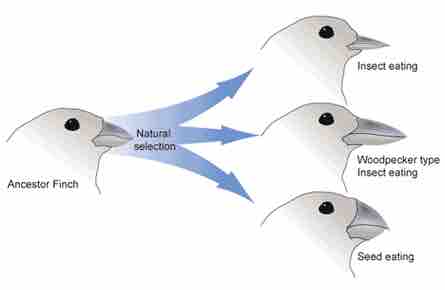An Introduction to Adaptive Evolution
Natural selection only acts on the population's heritable traits: selecting for beneficial alleles and, thus, increasing their frequency in the population, while selecting against deleterious alleles and, thereby, decreasing their frequency. This process is known as adaptive evolution. Natural selection does not act on individual alleles, however, but on entire organisms. An individual may carry a very beneficial genotype with a resulting phenotype that, for example, increases the ability to reproduce (fecundity), but if that same individual also carries an allele that results in a fatal childhood disease, that fecundity phenotype will not be passed on to the next generation because the individual will not live to reach reproductive age. Natural selection acts at the level of the individual; it selects for individuals with greater contributions to the gene pool of the next generation, known as an organism's evolutionary fitness (or Darwinian fitness).

Adaptive evolution in finches
Through natural selection, a population of finches evolved into three separate species by adapting to several difference selection pressures. Each of the three modern finches has a beak adapted to its life history and diet.
Fitness is often quantifiable and is measured by scientists in the field. However, it is not the absolute fitness of an individual that counts, but rather how it compares to the other organisms in the population. This concept, called relative fitness, allows researchers to determine which individuals are contributing additional offspring to the next generation and, thus, how the population might evolve.
There are several ways selection can affect population variation:
- stabilizing selection
- directional selection
- diversifying selection
- frequency-dependent selection
- sexual selection
As natural selection influences the allele frequencies in a population, individuals can either become more or less genetically similar and the phenotypes displayed can become more similar or more disparate. In the end, natural selection cannot produce perfect organisms from scratch, it can only generate populations that are better adapted to survive and successfully reproduce in their environments through the aforementioned selections.